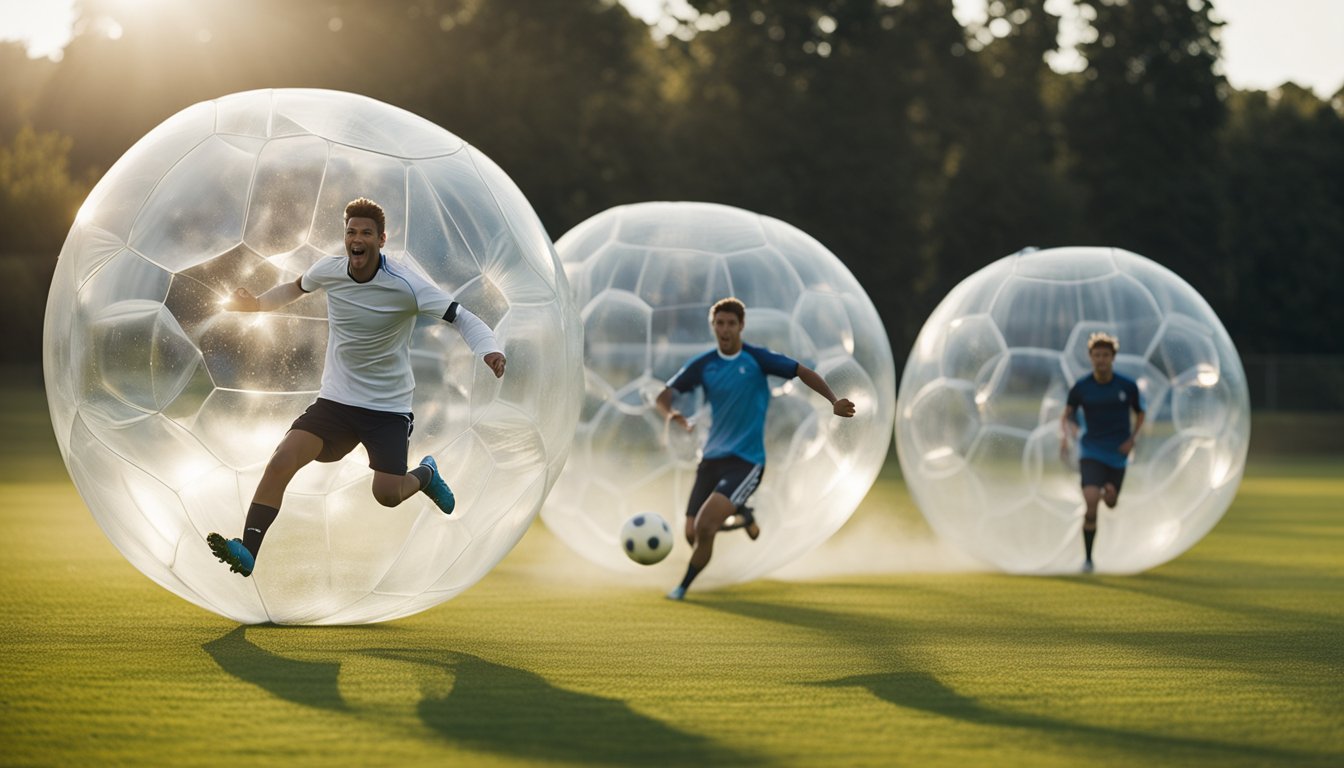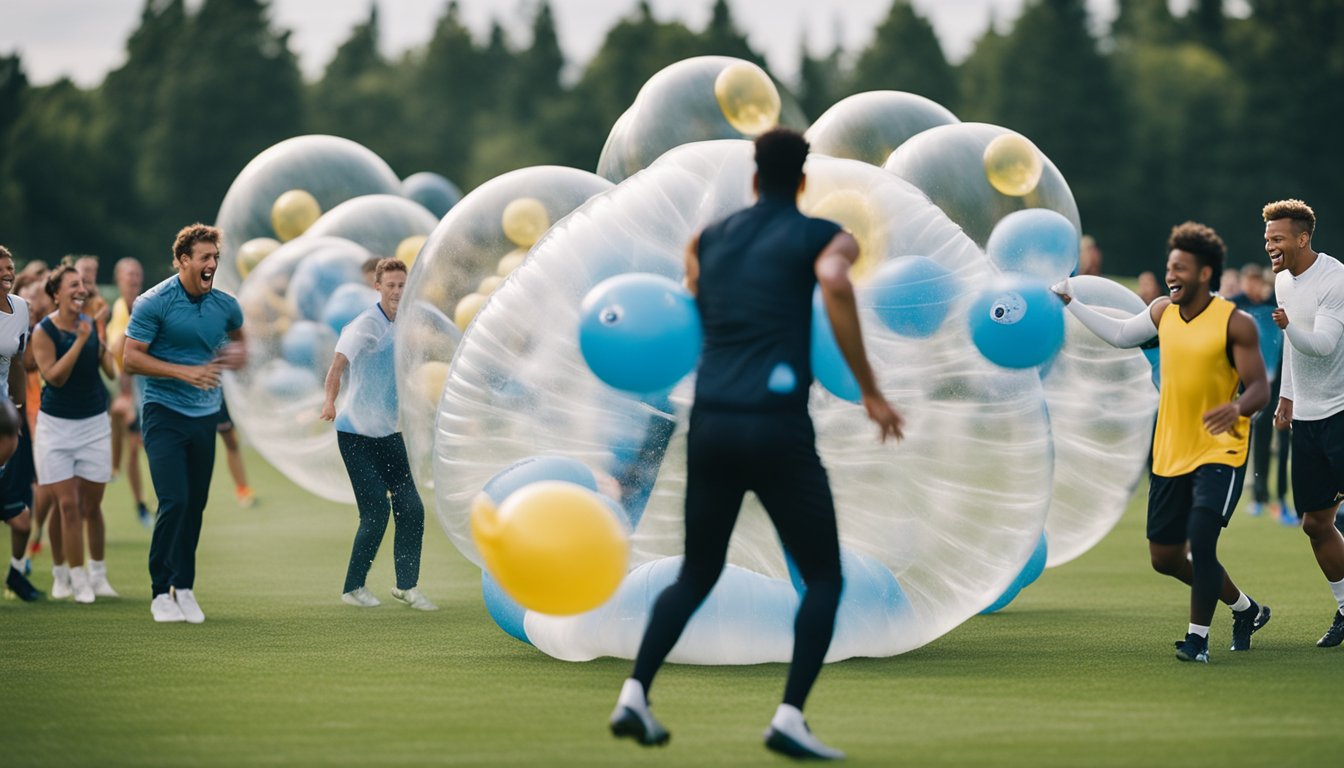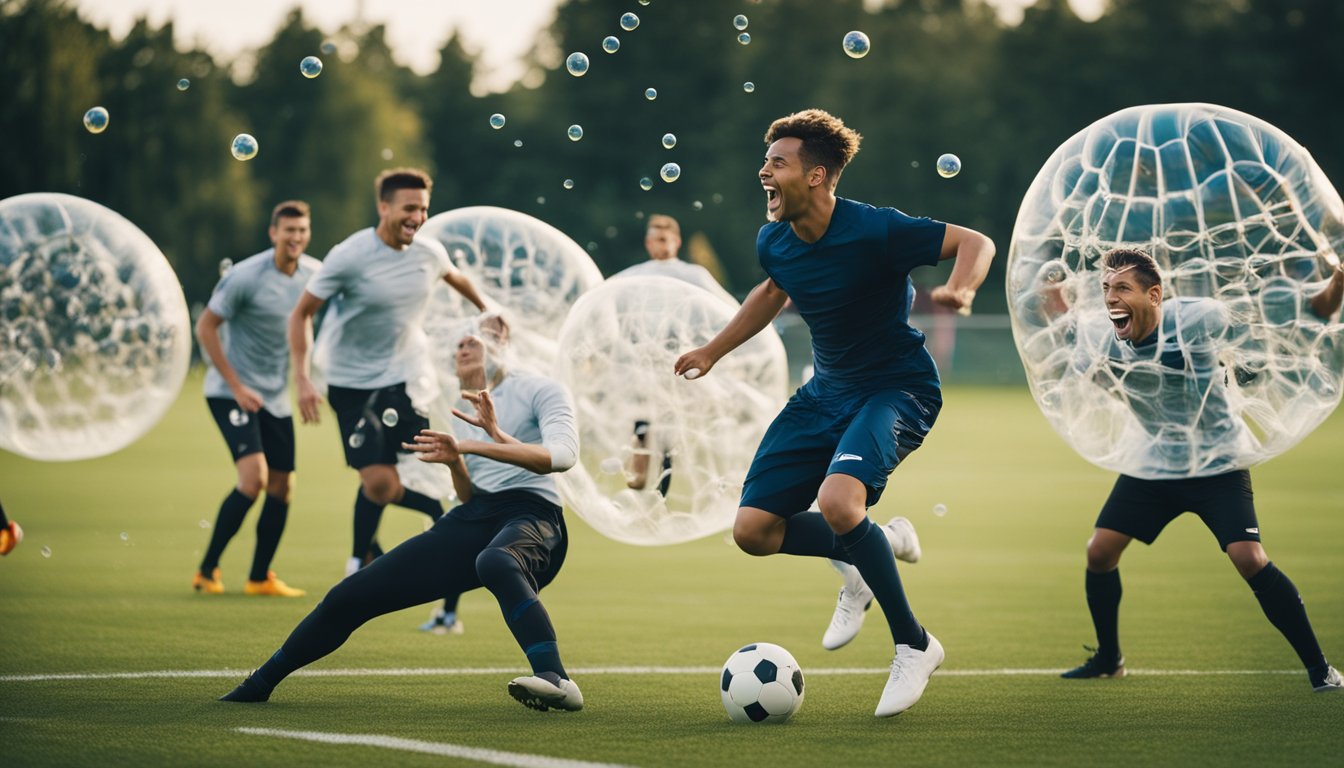Late updated: 09 Jul 2024 12:07
Written by: Emma Saunders
Fun Facts About Bubble Football: Exciting Insights and Trivia
Bubble football, often recognised as zorb football, is an exhilarating twist on the traditional sport. Enveloping players in large inflatable bubbles, this quirky game injects a hefty dose of fun and unpredictability into the playing field. From the UK to the USA, bubble football has burgeoned as a favourite for team-building events and casual get-togethers alike. The concept is simple: strap into your bubble suit and try to score goals just like in regular football, but with one big exception—you're bouncing off everything and everyone around you!

What makes bubble football so irresistible is its blend of physical activity and sheer hilarity. Whether you're colliding into opponents or simply trying to stand upright, the sport guarantees laughter and chaos. This modern concoction of football and fun has carved out a niche in the world of recreational sports, bringing people together through shared moments of joy and tumbling antics.
In bubble football, rules largely mirror those of regular football, but the emphasis is clearly on having a blast rather than strict competition. It's an engaging, inclusive sport perfect for corporate team-building exercises or just an afternoon of entertainment with friends.
Key Takeaways
- Bubble football combines traditional football with inflatable zorbs.
- Popular for team-building and social events in both the UK and USA.
- Encourages fun and physical activity with basic football rules.
Origins and Popularity

Bubble football, also known as bubble soccer, has a fascinating origin story and has surged in popularity around the globe. This unique sport, combining traditional football with the hilarity of zorb-like bubbles, captivates diverse audiences across many countries.
Inception in Scandinavia
The quirky sport of bubble football finds its roots in the Nordic nation of Norway. It all began in 2011 when Henrik Elvestad and Johan Golden introduced the concept on a Norwegian television show.
They envisioned a fun blend of football and physical comedy, where players bounce and collide within large inflatable bubbles. This initial broadcast caught viewers' attention and helped propagate the idea throughout Scandinavia. In Norway, the sport quickly gained a niche following, with local leagues forming and enthusiastic participants engaging in bubbly matches.
Global Expansion
The sport's remarkable growth can be attributed to individuals who saw its potential beyond Scandinavian borders. One significant figure in this expansion was Lee Moseley. In 2014, recognising the sport’s appeal, he chose to self-finance the promotion of bubble football.
His efforts led to its introduction in the United Kingdom, the United States, and even as far as New Zealand. The formation of bodies such as the National Association of Bubble Soccer in the U.S. helped formalise the sport. These organisations standardised rules and facilitated organised play, further boosting its reach.
Cultural Impact
Bubble football has had a broad cultural impact due to its light-hearted and inclusive nature. It quickly infiltrated popular culture, being featured in various media and public events. The sport's infectious laughter and physical antics provide a spectacle that appeals to both participants and spectators. Events and tournaments held in major cities such as London showcase its widespread appeal and community gathering potential.
Additionally, bubble football has found applications beyond just competitive play. It's a popular choice for informal gatherings, corporate team-building events, and even fundraisers. Its ability to bring people together in a fun and active way underscores its lasting cultural significance.
Playing the Game
Bubble football, also known as bubble soccer, offers a unique spin on the traditional sport by encasing players in inflatable bubbles. This twist not only adds a layer of fun but also changes how the game is played, prioritising safety and laughter.
Rules and Gameplay
The game of bubble football follows many rules of traditional football but with some variations to accommodate the unique equipment. Each player wears an inflatable bubble suit which covers their upper body and head, requiring agile balance and strength.
Teams consist of 5-10 players, aiming to score goals by manoeuvring the ball into the opposing net. Matches typically last between 60 to 90 minutes, often featuring shorter halves or golden goals to determine a winner quickly.
Unlike regular football, there’s no strict positions such as goalkeepers. Instead, everyone is both an attacker and a defender, creating a dynamic and fast-paced environment.
Safety and Sportsmanship
Safety is paramount in bubble football, thanks to the protection offered by the inflatable suits. These suits act as a cushion during tumbles and collisions, reducing the risk of injury compared to traditional football.
Sportsmanship is heavily emphasised, with referees ensuring the game remains friendly and fun. Fouls are rarely called unless safety is compromised, encouraging players to enjoy the physicality without worrying about injuries.
Proper equipment, such as well-fitted zorb suits and appropriate footwear like trainers, is essential. Games are typically played on soft surfaces, either indoor or outdoor fields, to further minimise risk. It’s also important to stay hydrated and take breaks, especially given the energy-intensive nature of the sport.
Competitive Scene
Bubble football has grown significantly, with organised competitions and leagues emerging around the world. The Bubble Football World Cup is a prominent event, drawing teams from various countries, including Brazil and many parts of Europe.
In addition to regular matches, events often feature unique challenges like obstacle courses and team-building activities. These not only test skills but also promote teamwork and quick thinking.
The sport has garnered media attention, including appearances on shows like "Shark Tank," and is recognised by organisations such as the British Bubble Football Association (BBA). Its blend of fun and competitive spirit continues to attract both casual players and serious competitors.
Frequently Asked Questions

Bubble football combines the fun of zorbing with the excitement of traditional football. Below, we answer some common questions about this entertaining and unique sport.
How is zorb football different from traditional football?
Zorb football, or bubble football, has players encased in inflatable bubbles. This allows for bouncy and humorous collisions. Unlike traditional football, the aim often involves bumping into opponents, making the game less about strict rules and more about fun.
What are some key safety tips for playing bubble football?
Safety is crucial in bubble football. Players should ensure their bubbles are fully inflated and secure. It's important to play on soft surfaces like grass or indoor courts to avoid injuries. Hydration and wearing comfortable clothes are also essential.
From which country did bubble football originate?
Bubble football began in Norway. It was initially created as a joke by two friends looking to try something new. The sport has since gained international popularity through its unique blend of fun and physical activity.
Can bubble football be played by any age group, and if so, what is the recommended minimum age?
Bubble football can be enjoyed by various age groups. The recommended minimum age for participants is typically around ten years old. This ensures that players are strong enough to handle the weight and movement restrictions of the bubble suits.
What materials are used to make the bubbles in bubble football?
The bubbles used in bubble football are generally made from durable PVC or TPU plastic. These materials are chosen for their strength, flexibility, and ability to absorb impacts, ensuring a safe and enjoyable game.
How has bubble football evolved since its inception?
Since its inception, bubble football has evolved with more organised leagues and events. The equipment has improved, becoming safer and more comfortable. Various playing styles and formats have also developed, making the sport more accessible and enjoyable for all ages and skill levels.
